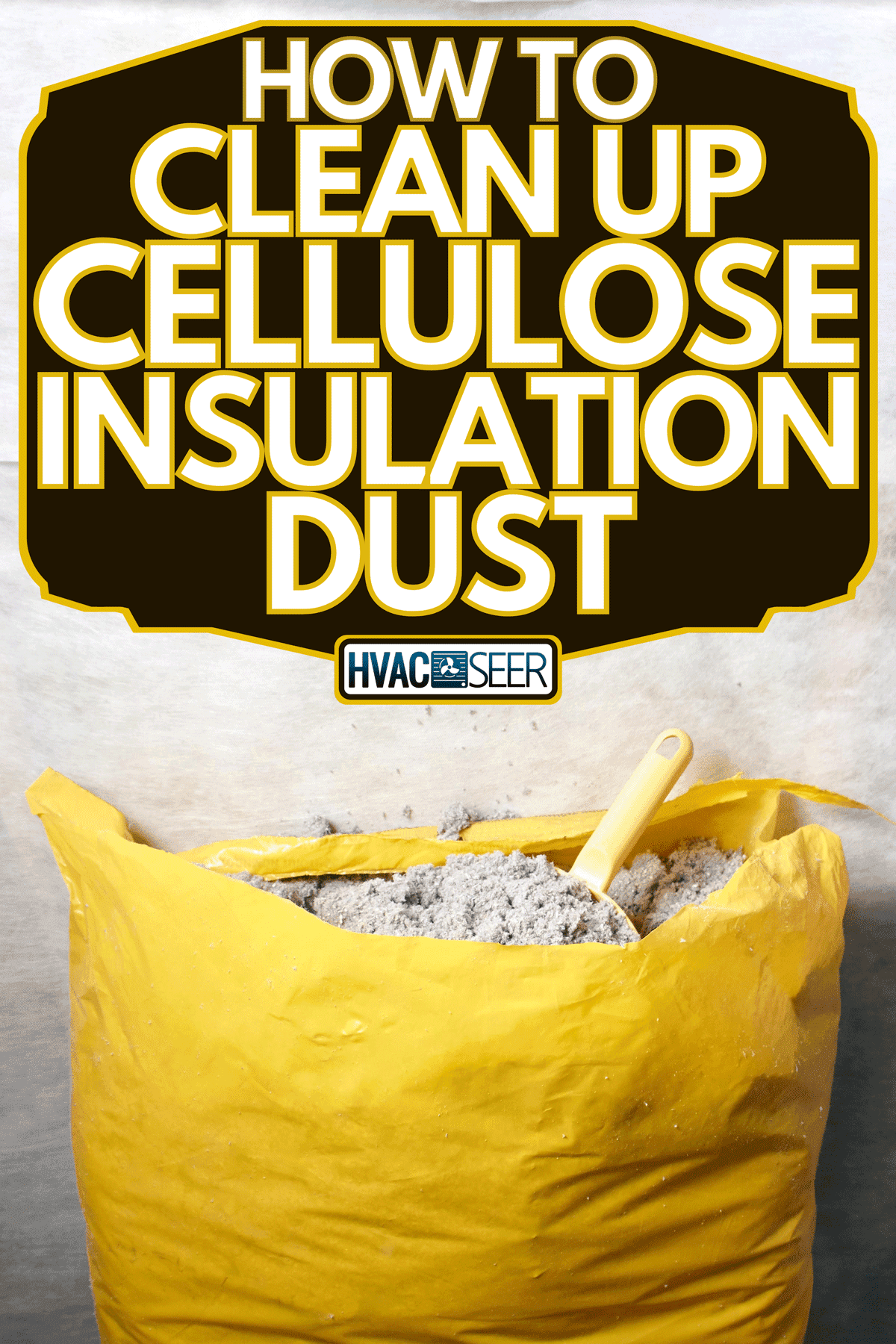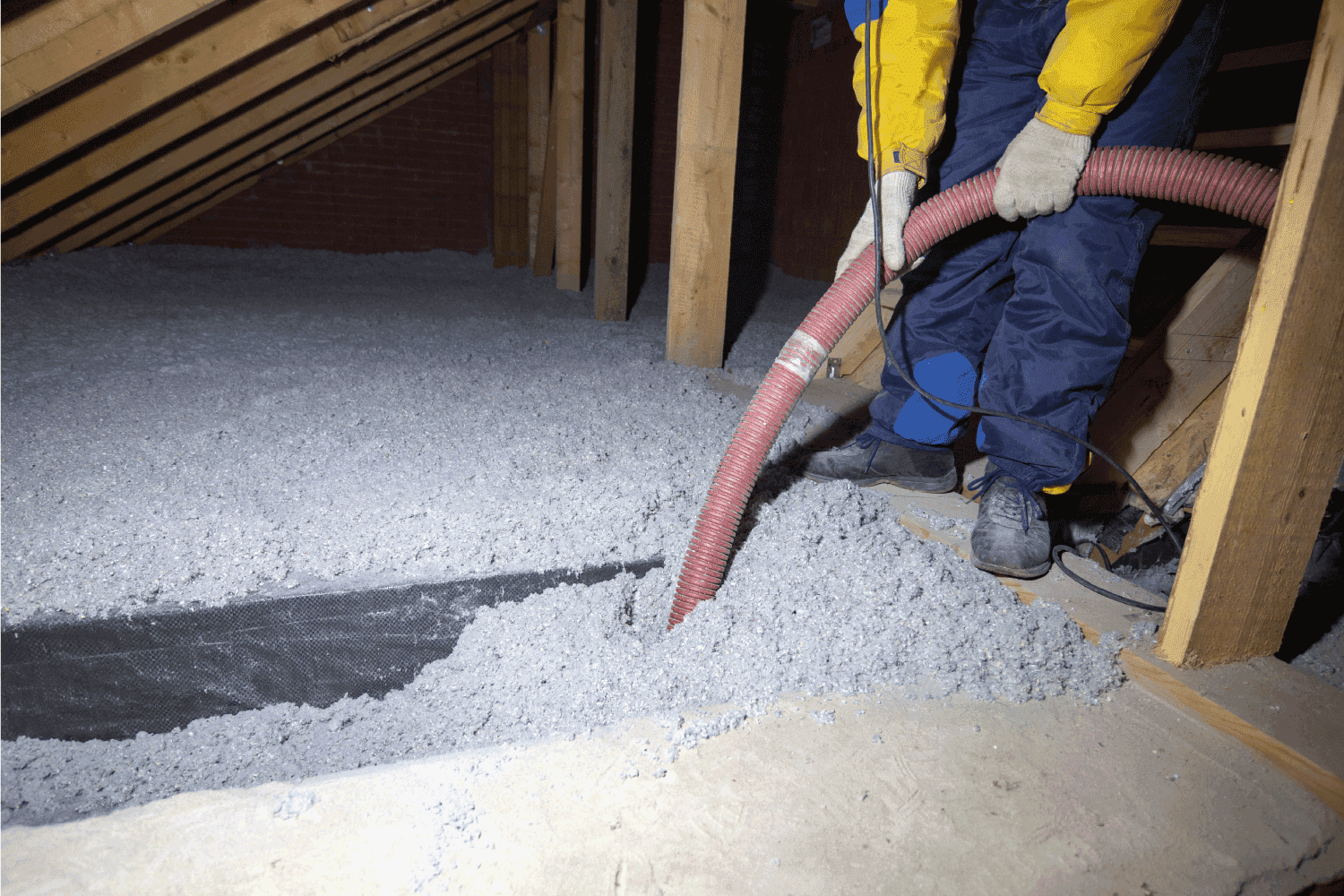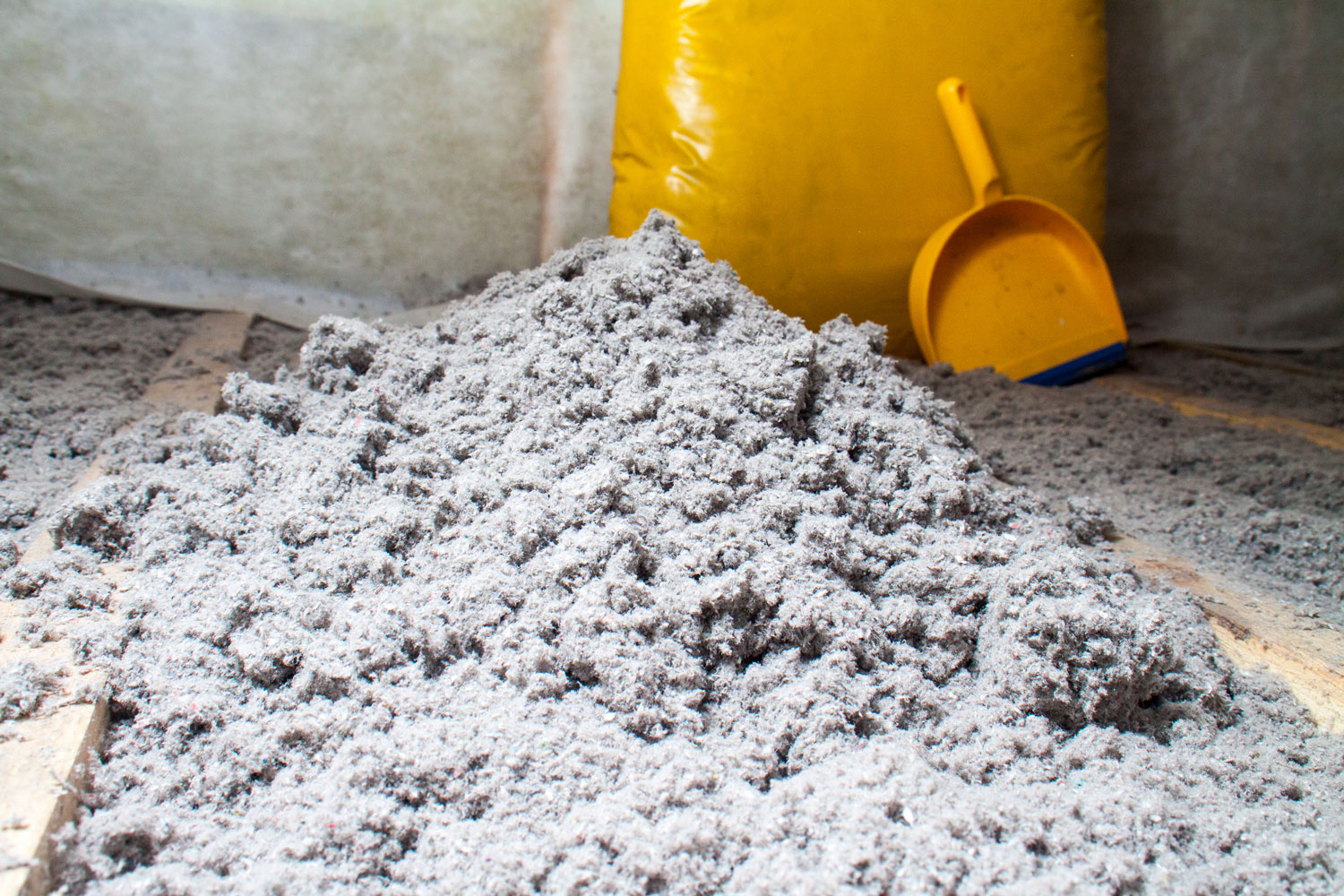Cellulose insulation is one of the best ways to insulate your home on a budget. However, you might have missed one detail—cellulose can leave dust all over your home. It's a problem that you should tackle immediately. If you're wondering how to clean up cellulose insulation dust, let's go over the steps.
Cleaning cellulose dust will take an intensely tedious deep cleaning job. Depending on the problem area, you'll need to wipe the walls, lamps, and floors. It's not easy to clean this dust. So, if you see it in one spot, you can safely assume it's covering a lot more area.
Cellulose dust is no joke. Some of it might be visible to the eye. However, there's much more that can be lingering in different areas of your home. For this reason, you'll need to do a deep cleaning. If you'd like to learn more about how to clean cellulose dust, keep reading ahead.

Dealing with Cellulose Dust
There are many reasons people choose to use cellulose insulation to keep temperatures at home comfortable. However, the problem with using this type of insulation is the dust it can spread throughout your home.
In general, this shouldn't be a problem as long as your light structures are tight. You might see a bit of this dust when you install cellulose insulation initially.
Now, here's the truth that you'll need to know. If there are openings in your home, you'll need to cover them. At the very least, try to minimize the amount of dust that circulates through that area.
Professionals will know how to deal with the problem. They'll consider factors like vents. As one HVAC professional puts it, source control is the first step in dealing with dust and indoor air quality problems.
There are a lot of factors that matter in this situation. Dust could be coming from your HVAC system, ductwork, and even through cracks and crevices in the ceiling.
A professional will take all of this into account. Once you stop the source, you can move on to the cleaning.

Cleaning Cellulose Dust
Dealing with the dust can be a problem that's too much for the average person to handle. If you've already tried to clean the dust once and failed, call professional services to do the job for you. Otherwise, if you're looking for a new approach, let's go over some recommendations.
The first thing you would want to do is remove old insulation from the attic. Clean up any dirt and grime built up in that area. Sanitize and deodorize it to the best of your ability.
While the attic is relatively clean, inspect areas for cracks and crevices. If you find some problematic areas, you should seal them with foam. From here, you can install new cellulose insulation to make up for the amount lost.
Otherwise, go with another type of insulation if the dust is giving you health problems.
Checking if the Problem Persists
After sealing the cracks and crevices, you can move on to cleaning your home. So, you'll need to wipe everything down. From furniture, walls, and floors, remove as much dust as possible.
Some areas might look clean. However, cellulose dust isn't always visible to the naked eye. In some cases, you might be breathing in large amounts without noticing. Accordingly, make sure not to skip cleaning surfaces.
Regarding air filtration, this is where things can get rough. You'll have to think about air filtration. Some might think that a vacuum would do just the trick.
As some suggest, borate dust particles are small. So small in fact, they can pass through regular vacuum filters. Thus, you'll need to tackle the problem with something else. More specifically, you'll need to use a HEPA vacuum.

If you're not familiar with the term HEPA, it stands for high-efficiency particulate air. HEPA vacuums are equipped with HEPA filtration that traps particles instead of recirculating them into the air.
Perform HEPA vacuuming on all surfaces and exposed areas of your home. Depending on the severity of the situation, you might also need the help of a HEPA scrubber. They cost around $180 to rent for a day at retailers like Home Depot.
Click here to see this HEPA scrubber on Amazon.
From here, wait a few days to see if the dust comes back.
Dust Keeps Coming Back
At this point, the foam should be covering cracks and crevices in the attic. Therefore, if they were the culprits, the dust shouldn't be coming back. But what happens if it does?
It would indicate you or a professional would have to check the HVAC unit. Consequently, this situation means there's a disconnection between the duct and the HVAC unit.
Though, this brings you a step closer to solving the problem. You or a professional would need to find the problem, seal it, and check to see if the HVAC unit stops bringing attic insulation into your home.
A Professional or DIY Project?
As you can see, there are multiple steps involved in solving this situation. It requires using special tools and searching for areas that circulate the dust. To some, it might be a relatively simple job.
However, if at any point you doubt your skills to accomplish the task, seek the help of professional services. Depending on how severely it affects you or your family members, it isn't a job where you can afford to wait.
Cellulose dust can make some living spaces uninhabitable. Regardless, it all depends on how much effort you're willing to put into this job.
Is Cellulose Insulation Dusty?

In general, cellulose insulation can be dusty. It's dusty to the point it can cover an entire home, as you can see from the information above. Even if you manage to contain it in the attic, some warn that it will cover any visitor in the attic with dust.
Moreover, every time anyone goes into the attic, pieces of cellulose will enter your home through the attic entryway. However, there are variations out there that aim to tackle this problem.
There's low-dust cellulose in the market with a small amount of oil added. Oil helps dampen the cellulose, which reduces the amount of dust it releases. Unfortunately, this only tackles the problem with the dust during installation.
There isn't enough information to verify if it helps with dust later on.
Is Cellulose Dust Toxic?
Cellulose dust isn't toxic generally. Some consider it nuisance dust at most. But, it does contain borates. So, there are some cases where people can be sensitive to it.
If you or others start having trouble breathing, it indicates sensitivity to the fire retardant chemicals in the cellulose. It's advisable to leave your home if the dust gives you discomfort.
Can I Touch Cellulose Insulation?

Cellulose insulation is made of recycled paper products and chemicals that help it last longer. The chemicals they use are mostly considered to be non toxic to humans. So, if it is safe to breathe in most cases, you can assume that it would be safe to touch too!
Does Cellulose Insulation Make You Itch?
However, it does raise the question—can cellulose insulation make you itch? Some materials, like fiberglass, are irritating to the eyes and nose. And, if it gets on your skin, it can make you itch for minutes.
Luckily enough, cellulose is nothing like this. It doesn't have anything that can irritate the skin or respiratory tract (unless you're chemically sensitive).
How Do You Remove Blown-In Cellulose?
Removing blown-in cellulose requires a bit of effort. The first thing you'll need is safety gear. While it might not be a skin irritant, dust will cover your clothes. If you don't want to cover other areas of your home with old cellulose, wear protective gear.
You'll need multiple garbage bags to collect the cellulose. The best tool to gather it would be a HEPA vacuum. Before starting, make sure to close the entryway. This way, the insulation doesn't make its way into your home.
Set up an area to keep the trash bags full of cellulose. Once you're set, begin vacuuming the insulation. Before tying the garbage bag, squeeze them a bit to let out excess air.
Disposing of the Cellulose
As you keep going, make sure to keep an eye on your vacuum. Empty it frequently. Once you finish the job, it's time to dispose of the cellulose.
You can't treat it like standard garbage. At this point, you might have to do some research. Call the manufacturer to see if they have a recycling program.
If they don't, call up your local waste management office. In some cases, they'll let you dispose of the cellulose with the regular trash. Otherwise, they'll give you instructions on where to take it.
In Closing
Dealing with any dust is a tedious task. Unfortunately, cellulose dust presents a challenge. If you want to clean it up, you'll have to stop the source of the problem first. We hope you found the information above helpful!
Before you go, do you have other cellulose concerns? Are you curious to know how long it lasts? To find out more, check out this post:
How Long Does Cellulose Insulation Last?
Are you wondering if cellulose can deteriorate? You can learn more in this post:

